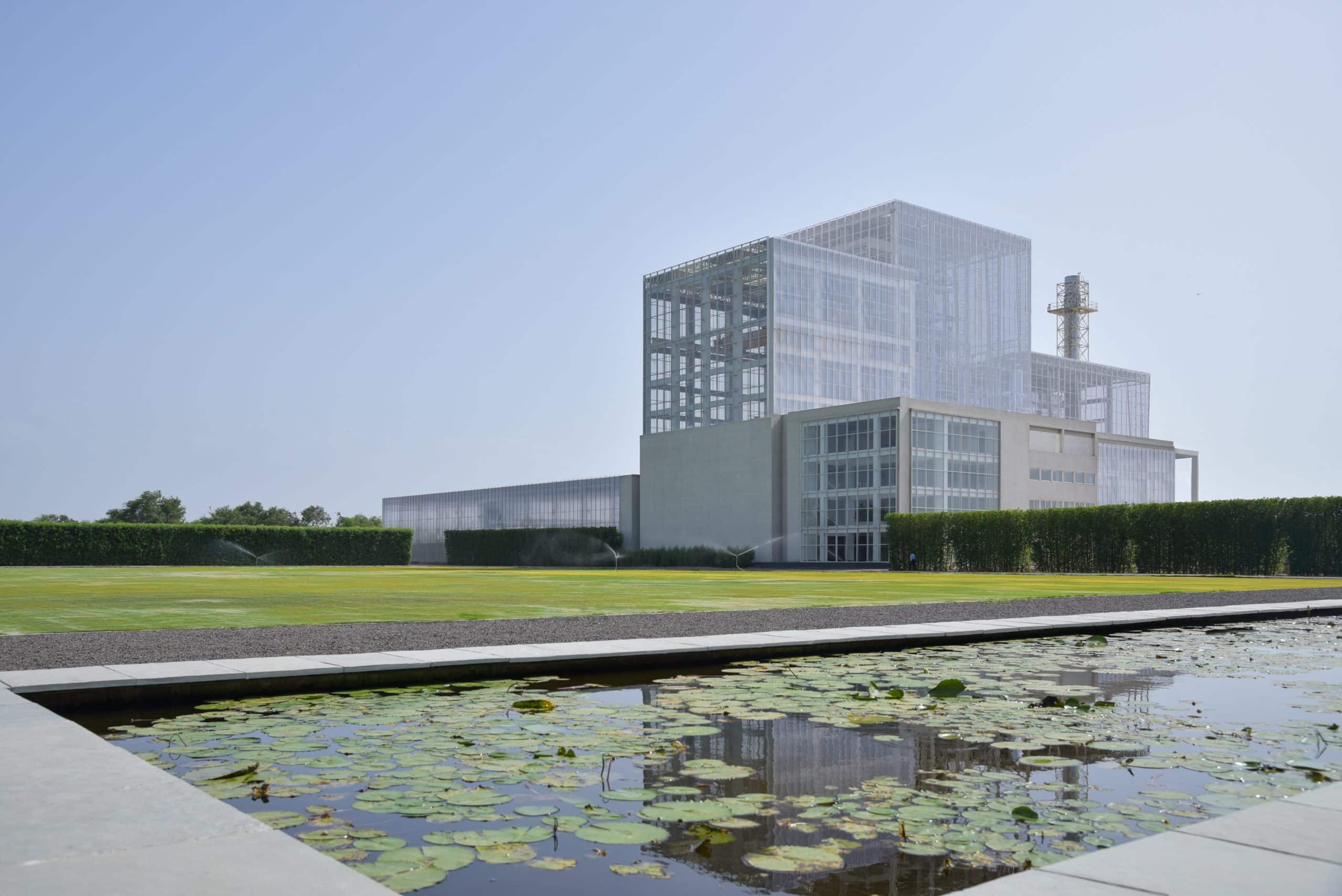
Waste-To-Energy Campus - Jamnagar
Jamnagar, Gujarat, India
Across the globe, rapid population growth and urbanization have given rise to a major problem that is expected to continue at an astonishing rate: Waste! “Waste to Energy” is a project at the forefront of the “swachh bharat mission” that shall make a significant and lasting contribution to its goals and create value for the society through creation of a new economic process leading to income and employment, while also tackling the issue of solid waste management in cities. INI Design Studio is working on the building complex for the Waste to Energy projects in Ahmedabad and Jamnagar.
Site Area : 17 Acres
Builtup Area : 84,228 SF, 7.5 MW
Services : Master planning, Programing & Planning, Detail Project Report (DPR), Architecture, Interior Design, Landscape Design, PMC - Turnkey, MEPF Engineering, IT/AV, Civil & Structure Engineering, Sustainability & Certification & Certification
Accolade : HUDCO Design Awards 2023-24 - Category 4 – Green Building
Share ►
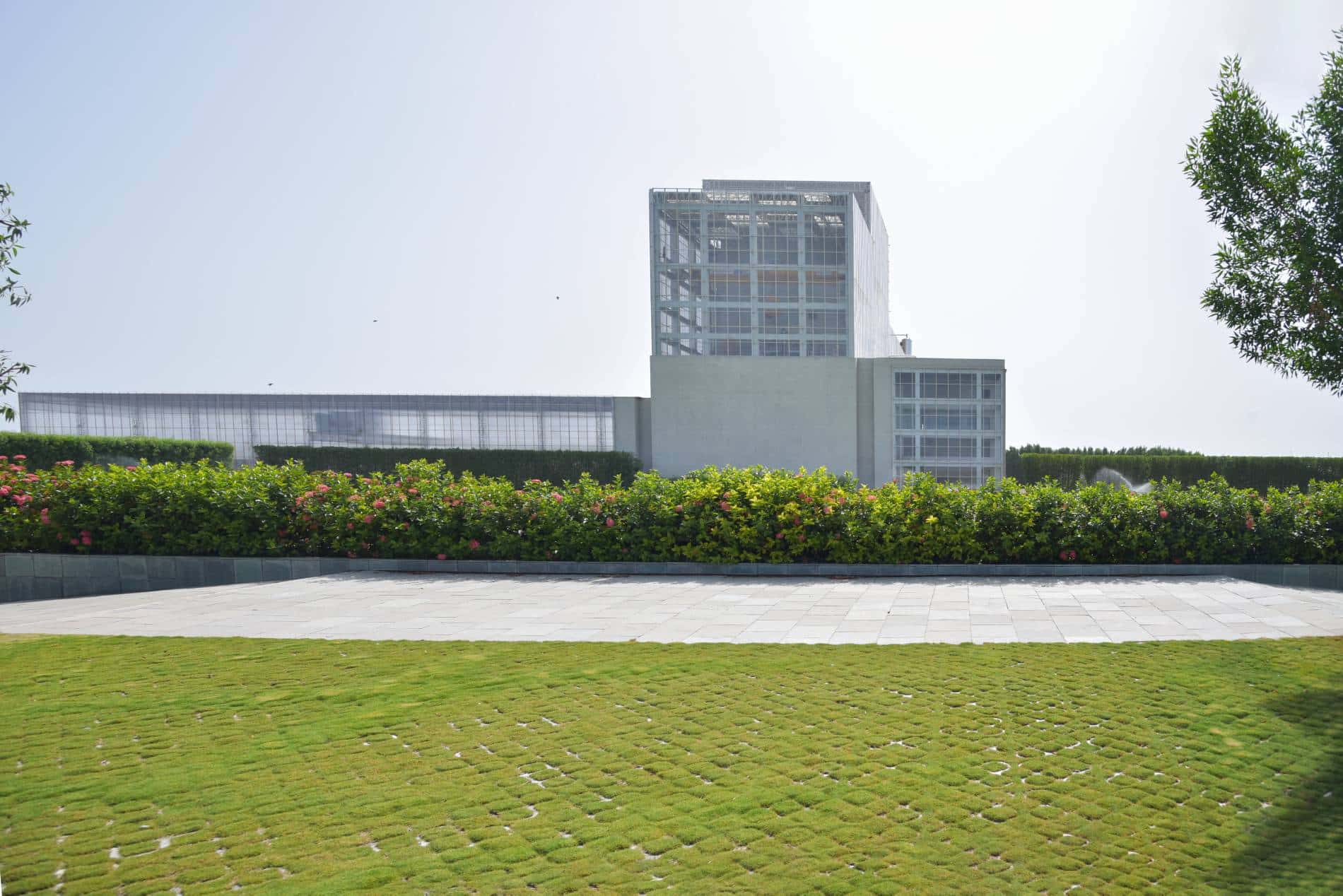
Urban Sustainability through Cutting-Edge Systems Transforming Solid Waste into Clean Energy
Two major components of urban planning and administration that perpetually pose gargantuan challenges to achieving healthy, sustainable living environments are solid waste management as well as energy sourcing & generation. Managing the disposal of a city’s thousands of metric tons of waste often ends up raising a landfill stink in most Indian cities. Ensuring an adequate supply of energy for a city’s industrial, transportation and residential needs is extremely resource intensive and generates an enormous carbon footprint. INI Design Studio had the opportunity to participate in resolving both these problem areas significantly through a single infrastructure solution for the city of Jamnagar.In housing and enabling the superlative technology offered by Abellon Clean Energy Ltd., the design team was able to create an efficient campus for converting municipal solid waste into clean energy and many green products. Additionally, this campus also provided beautifully crafted, environmentally supportive public open spaces including sports facilities for citizens to use and enjoy. Aligned to the Swachh Bharat Mission initiated by the Indian Prime Minister, this Waste-to-Energy project helps the city to fulfil some of its sustainable development goals (SDGs).
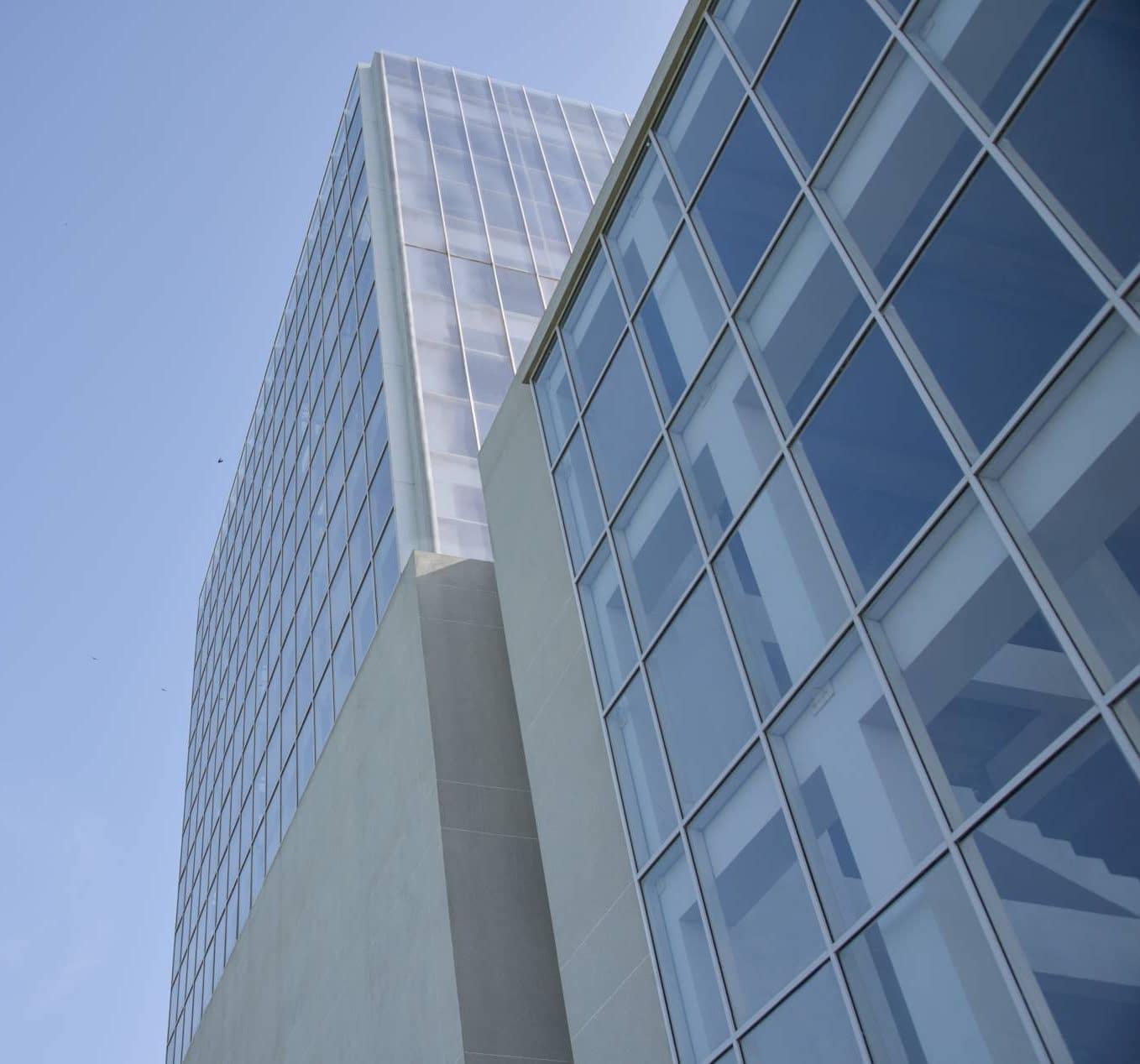
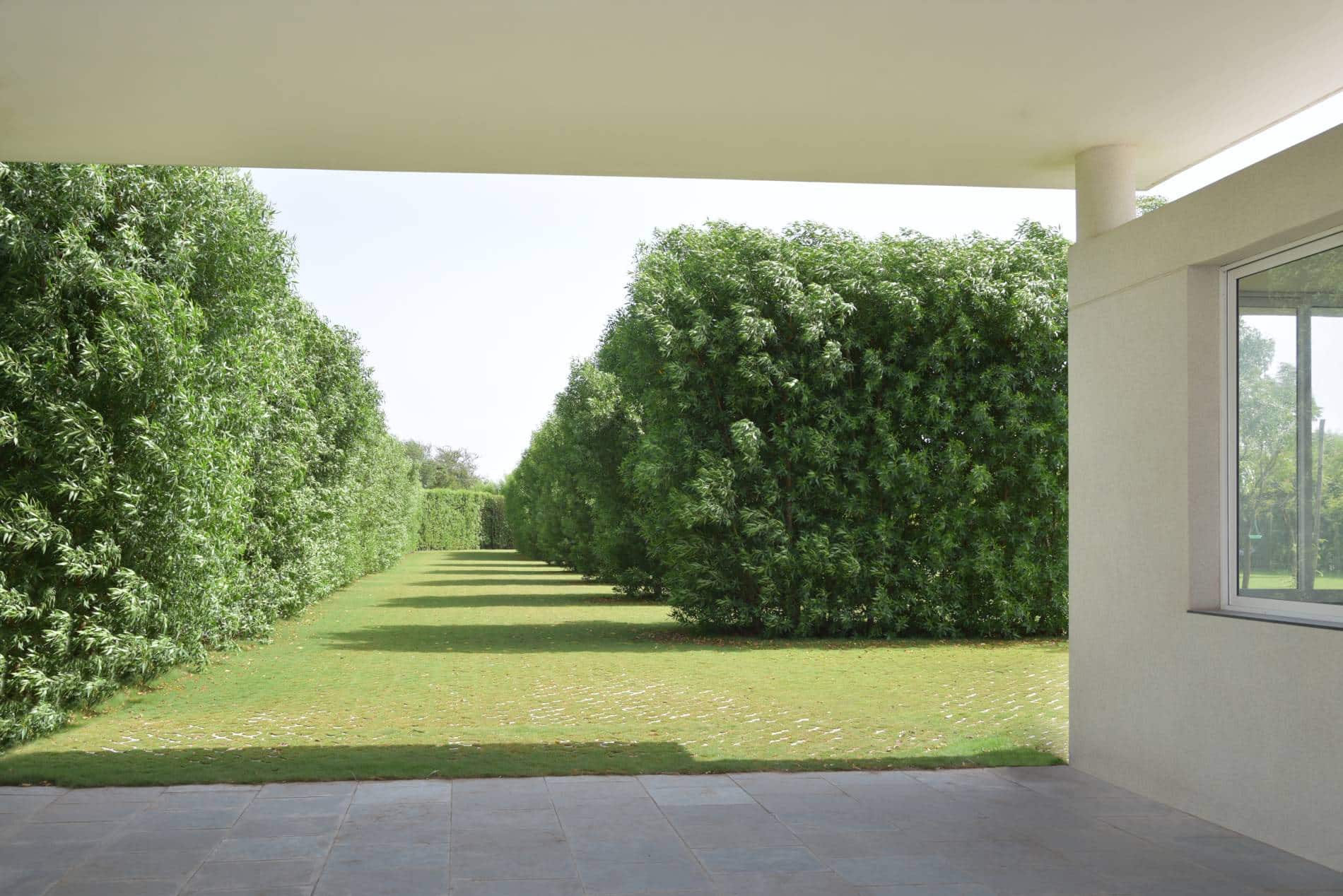
Carbon Neutral, Energy Positive, Contextually Customized, Automated
The technology developed for the conversion of municipal solid wastes to usable forms of clean energy and other green by-products had remarkable twin advantages. Firstly, it was designed for the Indian urban context in terms of type and quantum of waste generated and secondly, it involved absolutely no human interface during the entire process from start to finish. It ensured the disposal of thousands of metric tons of the city’s solid waste in a manner that simultaneously did away with colossal diesel consumption and CO2 emissions that are routinely involved. The technology takes into account the precise components of Municipal solid wastes through a process of sampling and laboratory analysis before customizing the process for a specific city. The fully automated system takes care of receiving collected waste and processing the components by an environmentally secure procedure and delivering the clean energy products as the final outcome.
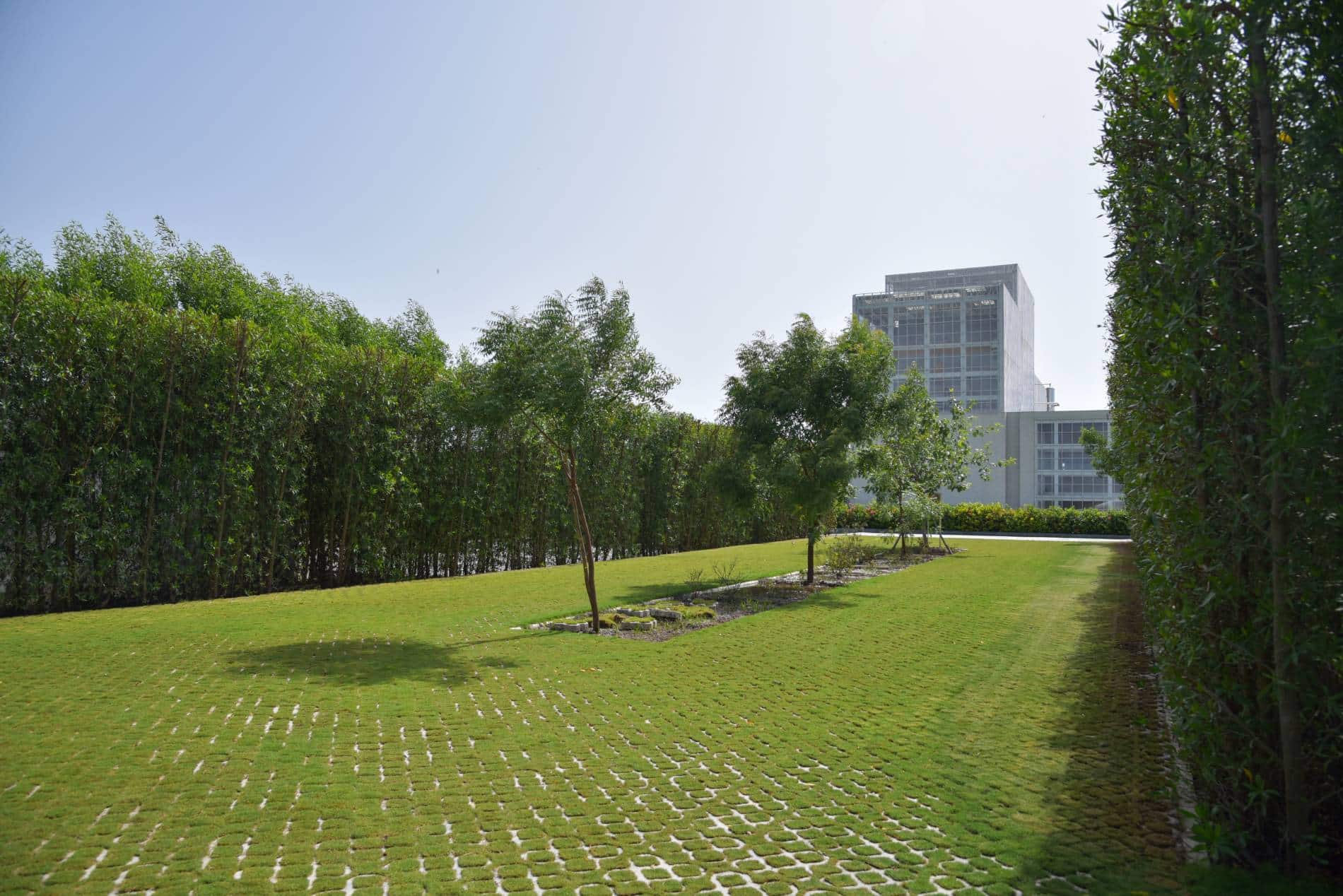
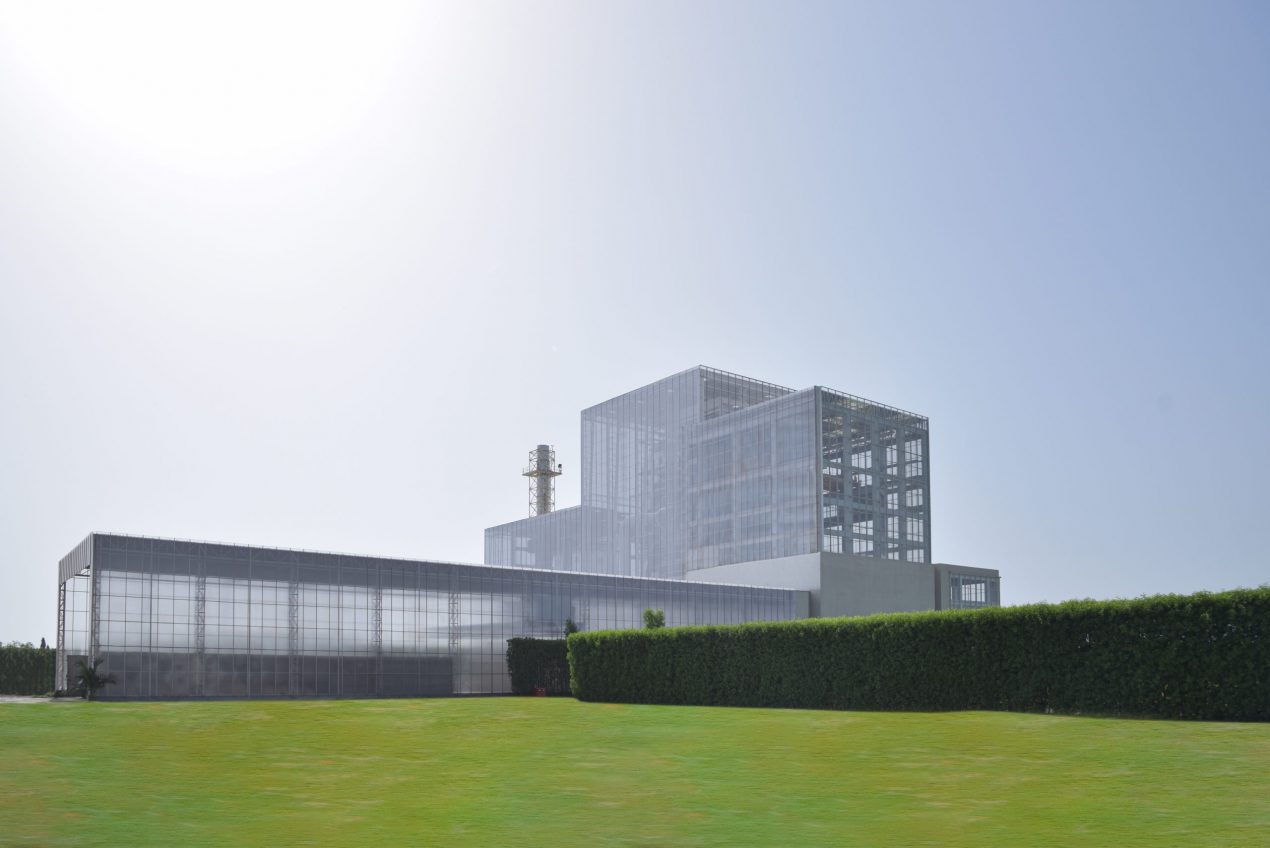
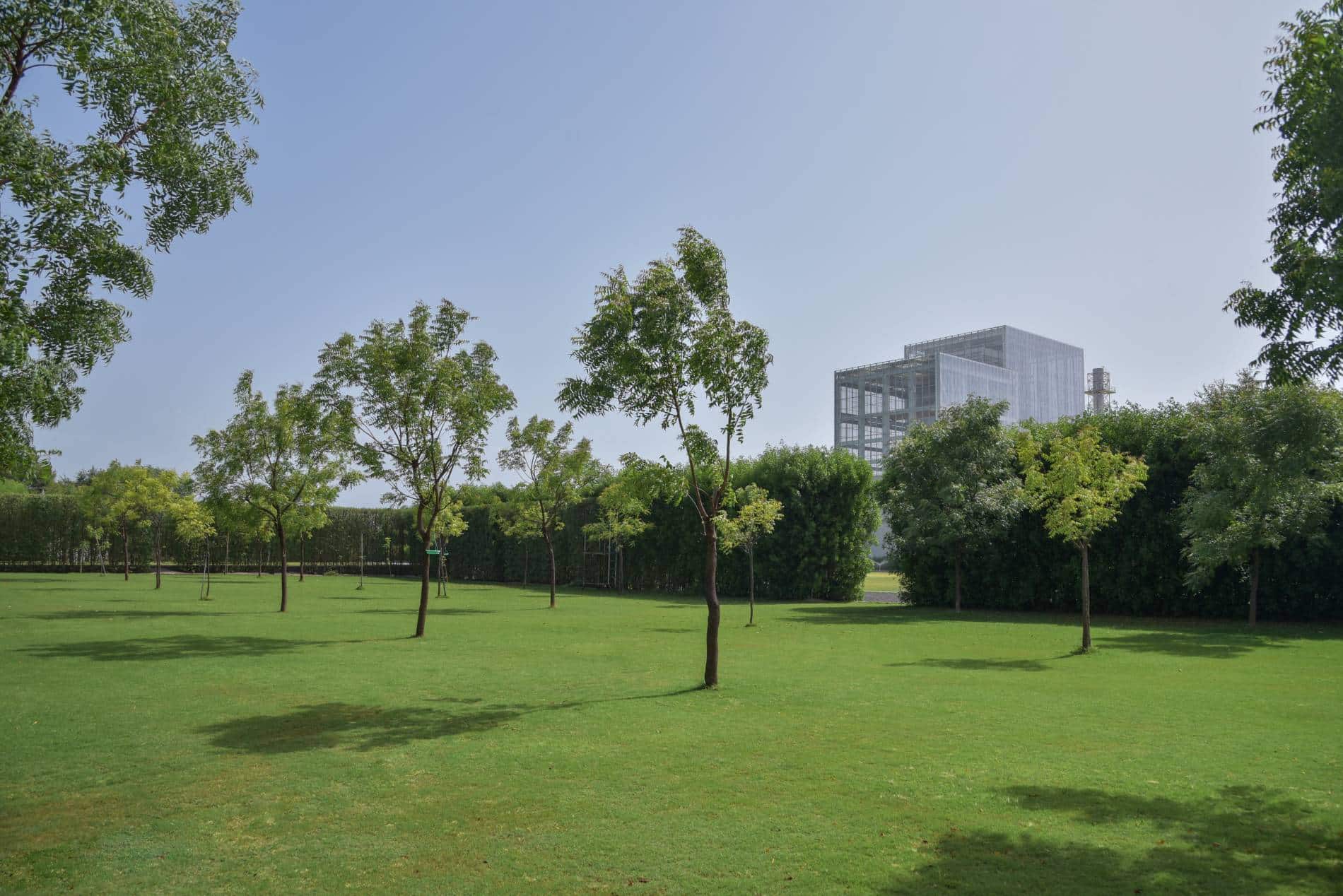
Misty Green Campus Instead of Mountains of Stinking Garbage
Unlike the routine garbage collection landfills of most Indian cities which are shunned, avoidable places for citizens on account of their stench and toxicity, this center for waste collection and disposal is set within an inviting campus which citizens can visit to enjoy the green landscape, breathe fresh air. The design of the facility was preluded by all the customary studies of the site, soil conditions, climatic parameters, material and technological compatibility involved in an architectural project. This site on the edge of Jamnagar lies adjacent to the existing sewage treatment plant and electricity sub-station located to its north. The building units that house various parts of the processing infrastructure are laid out along the rear south western river front part of the 68000 sq m site. Vast open spaces having landscaped approach-ways and gardens, tree groves, a football field and other public amenities are laid out along the frontal part. The entry points, which are segregated for material trucks, staff and visitors, are all gained from the eastern approach road. After the solid waste is received from collection truck at the unloading facility, it passes through the chain of processing units of which the main parts are housed in a transparent shell with an exterior made of a thermoplastic polycarbonate sheet which delivers extreme strength, good light transmission & diffusion, effective thermal insulation and an aesthetically pleasing exterior. The process is monitored from an overlooking control room within the building which is accessorized by the administrative and staff facilities like work cubicles, meeting rooms, dining, and other breakout areas.
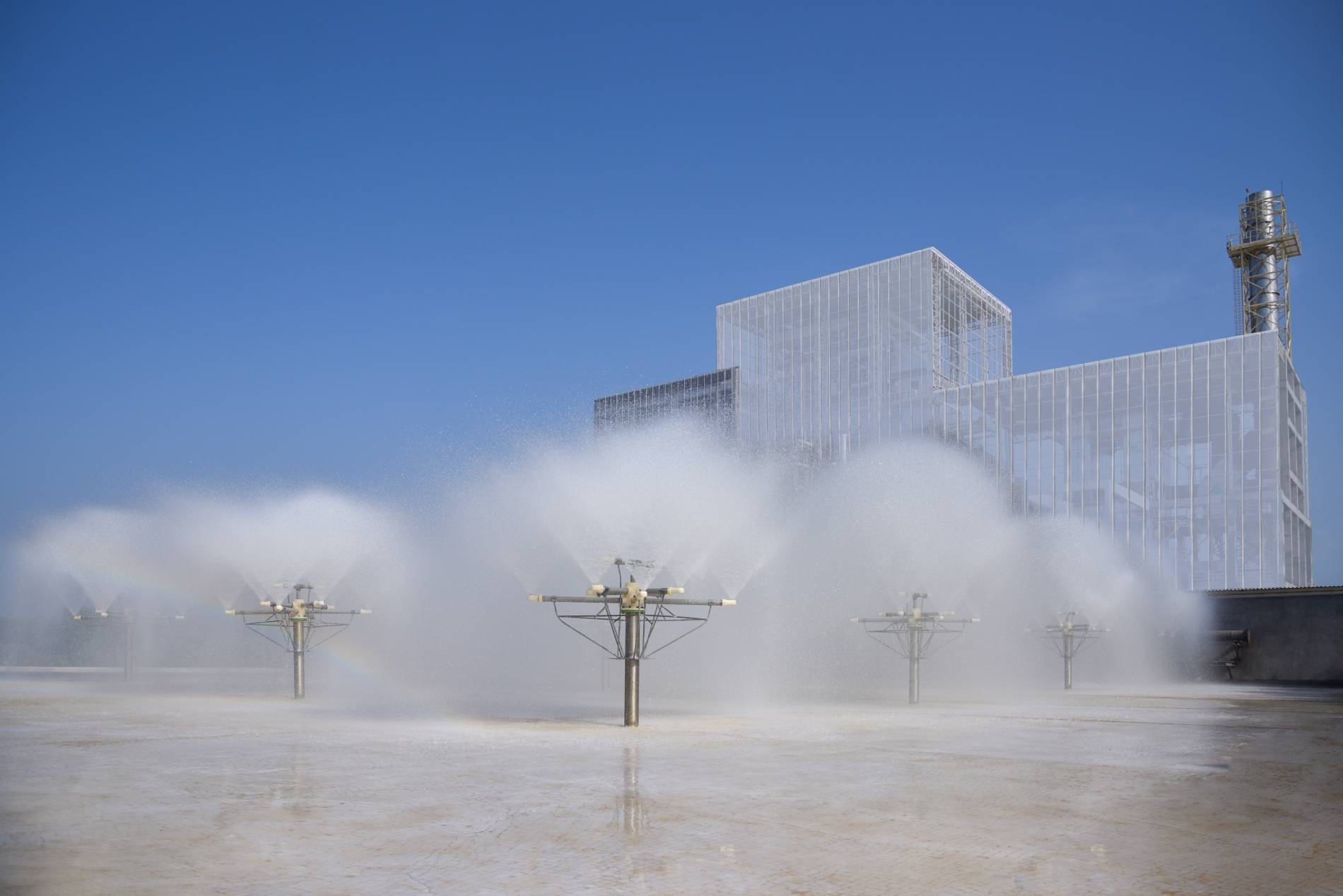
Learning Ground for All - from School Children to Researchers
Driven by the aim of creating the aura of a campus, this Waste-to-Energy project encased in a transparent building amidst healthy green premises is designed to enable learning processes. It can host educational trips for curious young minds from Jamnagar’s schools as well as provide valuable data for post graduate researchers in the fields related to urban planning, green energy, solid waste management, chemical processing, etc.
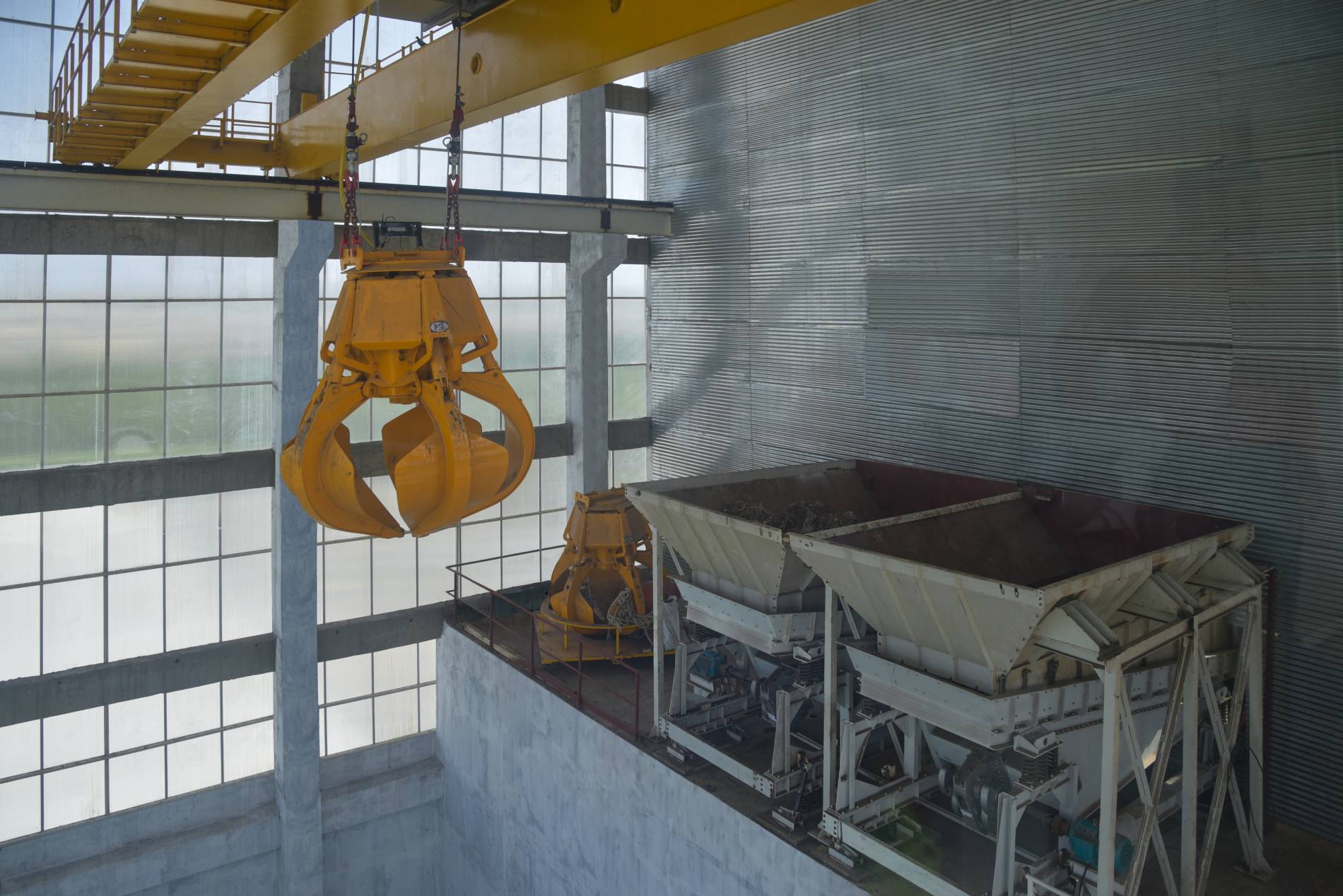
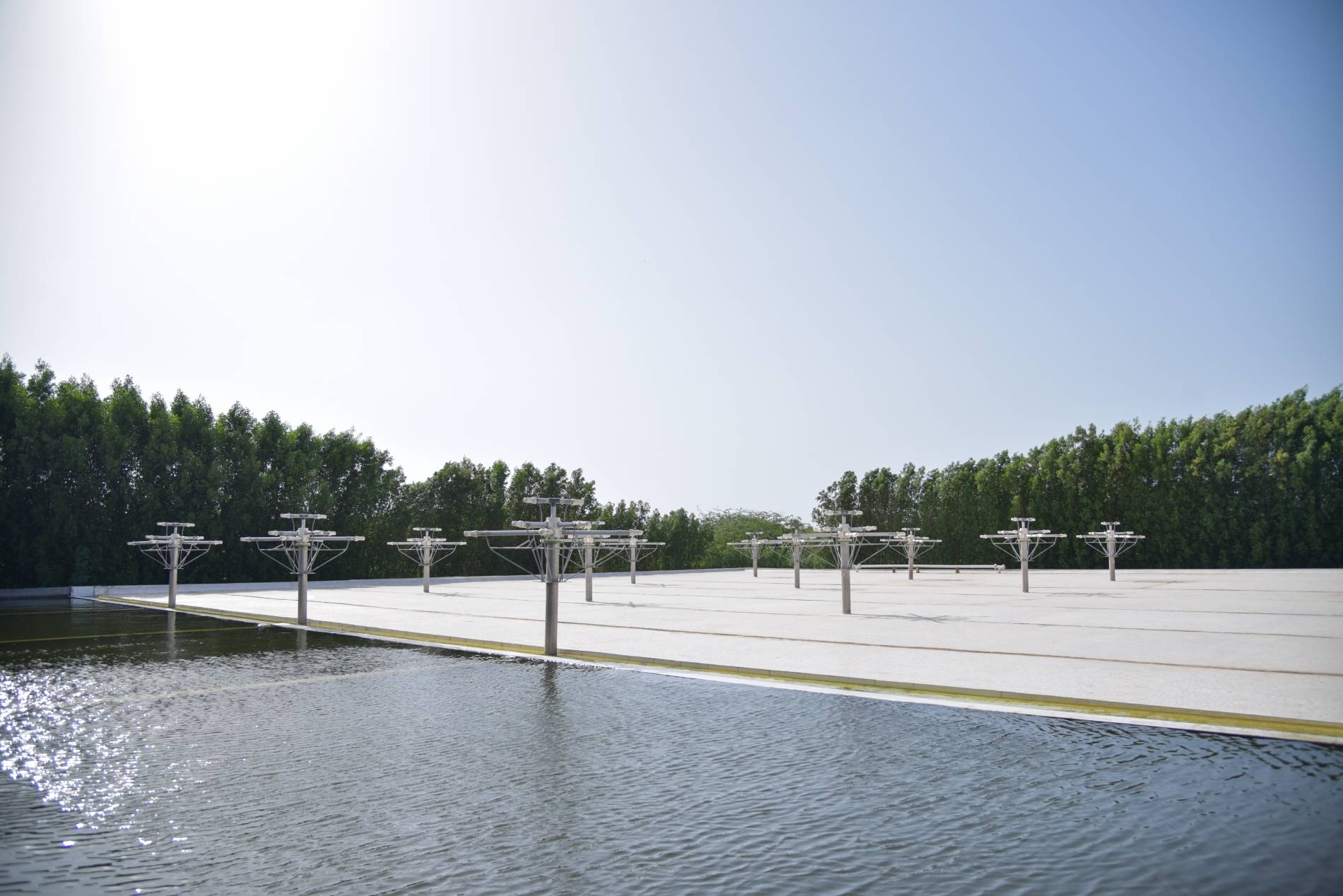
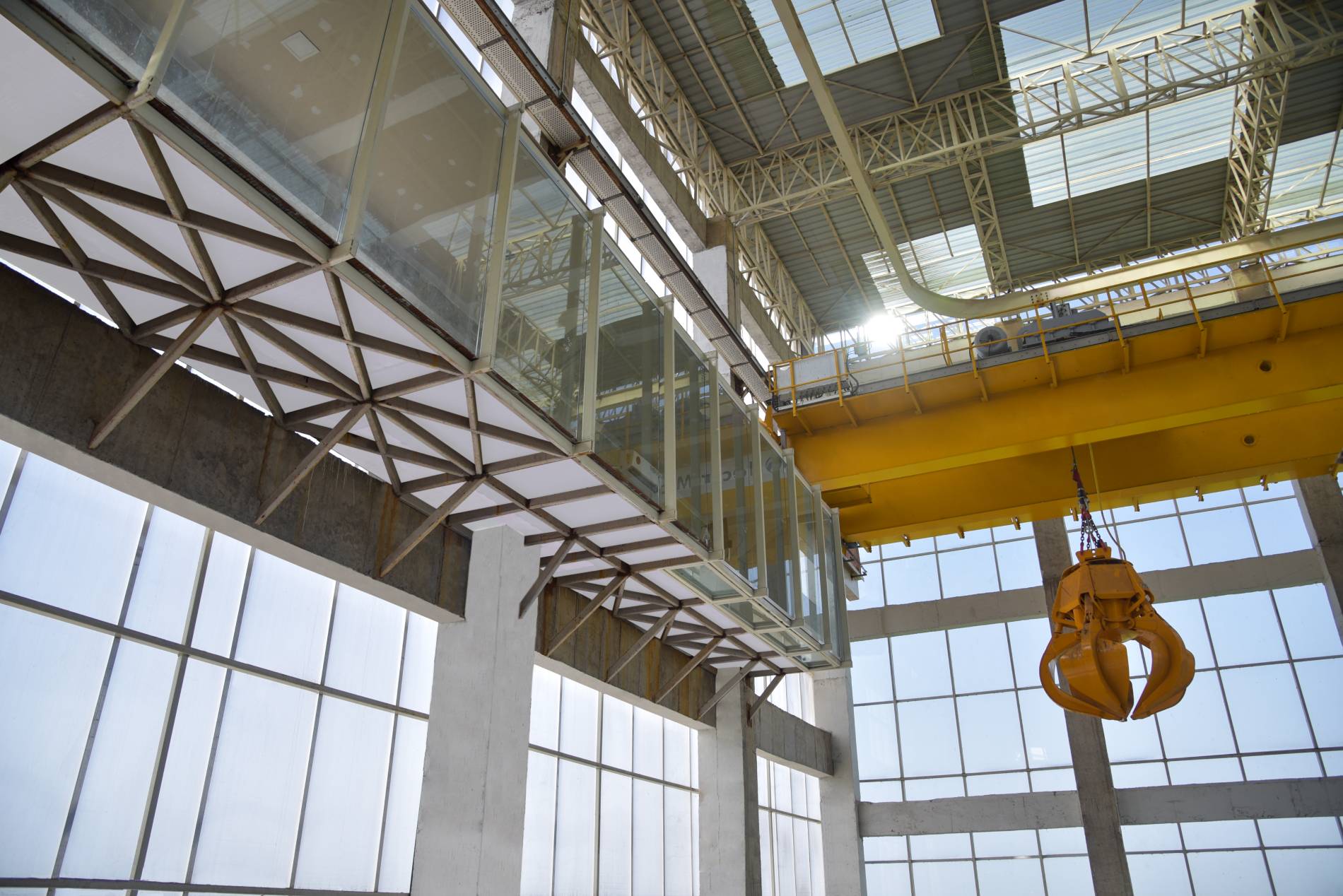
Participative Process & Enhanced Neighborhood Profile – Positive Consequences
Driven by the aim of creating the aura of a campus, this Waste-to-Energy project encased in a transparent building amidst healthy green premises is designed to enable learning processes. It can host educational trips for curious young minds from Jamnagar’s schools as well as provide valuable data for post graduate researchers in the fields related to urban planning, green energy, solid waste management, chemical processing, etc.
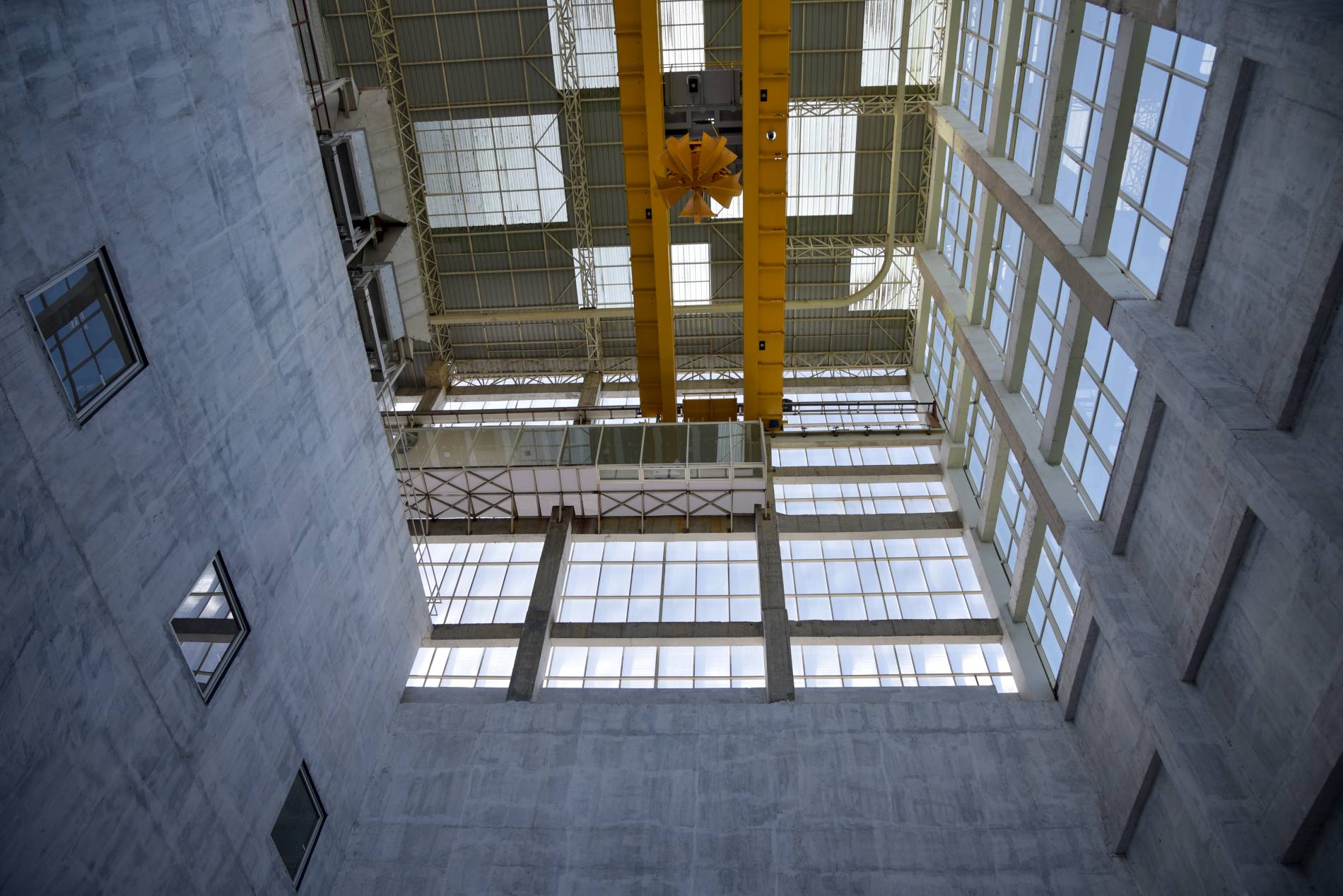
"Re-imagining Urban Infrastructure Processes to effect Sustainability and Lifestyle Enhancement"

